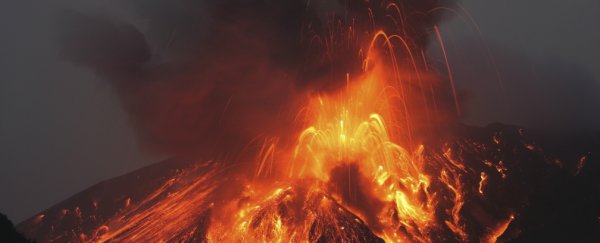Japan is bracing itself for what scientists say could be a large explosive eruption, after a series of recent earthquakes and indications of rising magma around Sakurajima Volcano on Kyushu island, at the country's southern tip.
The geological activity is reminiscent of the events that preceded the volcano's 1914 explosive eruption, which killed 35 people. The Japanese Meteorological Agency has now raised the alert status to Level 4, which means that nearby residents are preparing to evacuate. Level 5 is the highest alert status available.
Although the warning is currently limited to the roughly 4,000 people living on the same island as Sakurajima, there are concerns that a large eruption could stop work at the recently restarted Sendai Nuclear Power Plant, which is around 50 km away. The city of Kagoshima could also be impacted depending on winds and the volume of material that's ejected by the volcano.
As Erik Klemetti reports for Wired, activity around Sakurajima isn't unexpected. It's one of the most consistently active volcanoes in the country, producing hundreds of small explosions each year.
But researchers are concerned because all of the recent earthquakes from Sakurajima "have been centred only a few kilometres beneath the Minamidake vent of the volcano and since yesterday morning, strain meters installed in the volcano have shown dramatic changes typically associated with magma rising into the main edifice of the volcano", writes Klemetti.
Sakurajima is part of the Aira Caldera, which was formed by a devastating eruption around 22,000 years ago. While there has been some concern from researchers that a similar-sized Aira Caldera eruption today would be disastrous for the region, there are no signs that anything that large in the works, so there's no need to panic just yet.
The volcano's last explosive eruption was in 2013, when ash was blasted more than 6 km into the sky. But the resulting cloud wasn't overly disruptive, and activity has been pretty minimal ever since. The 1914 eruption, on the other hand, was classified as a 4 on the Volcanic Explosivity Index (VEI) out of a potential 8. That means it blasted out roughly the same volume of ejecta as Iceland's Eyjafjallajökull in April 2010 - an event that interrupted air travel for weeks afterwards.
The reality is that scientists don't know much about the size or impact of the potential eruption just yet. But they're definitely keeping a close eye on the volcano for now. Wired has put together a handy list of webcams currently monitoring Sakurajima, so that you can watch live too.
